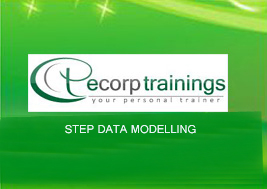STEP DATA MODELLING
Configuring a data model in STEP.
This course is targeted towards application consultants or other roles responsible for transforming the conceptual design of a STEP solution into a functional configuration

Prerequisites :
Stibo Systems Academy courses (or the knowledge taught in this course acquired in other ways)
o STEP_101 - STEP Solution Fundamentals
Experience with Relational Data bases, object oriented design and general MDM knowledge will
be helpful for participants in this course.
At least one year of application consultancy experience and/or system implementation.
Course Content:
1 - Maintain existing data model in STEP over time
Identify the impact of modifying or expanding attributes, references and hierarchy structures (e.g.
product, classification or entity) to an existing Data Model.
Implement dimension dependency to attributes.
Comprehend pros and cons of Calculated Attribute usage and when to use Business Rules
alternatively.
Adapt the data model to allow for bundling of products (e.g. for sales-promotion purposes).
Apply configurations to the data model to allow downstream systems to organize attributes in a
defined order.
Add Reference type for relationships between product and classification object types.
Add Product to Asset Reference types.
Extend an existing product hierarchy by configuring a family of product variants.
Extend existing product data model to allow for a buy-side/sell-side model.
2 - Expand existing data model in STEP within existing and new
domains
Give examples of the STEP data model configurations for different verticals, such as Automotive,
CPG-GDSN, Retailer, Finance, Manufacturer, Healthcare, Distribution, Hospitality, and Apparel.
(4k)
3 - Troubleshoot issues in STEP occurring during data model
configuration
Reconstruct the data model attribution to avoid orphan attributes.
4 - Build a data model in STEP based on common/good practices
Apply attribute validation using List of Values (LOV).
Apply category-specific attributes to product hierarchy, allowing for inheritance of attribute values.
Complete instantiated Product, classification and entity hierarchies based on established data
model configuration for testing the data model.
Administrate data validation on attributes using different attribute validation base types (e.g. Text,
Number, Date, and List of Values).
Apply reference inheritance to Product-to-Product reference types.
Locate grouping of attributes.
Add calculated attribute functions (i.e. extract and concatenate) on attribute values of a product.
Add Entity to Entity Reference types.
Exemplify when to use auto-generated IDs to object type instances.
5 - Identify gaps between business requirements and STEP solutions
Relate Business requirements detailed in the data model documentation with existing STEP
system functionality and confirm when requirements cannot be met by existing STEP system
functionality.
6 - Evaluate business requirements defined in the specification
documents
Establish Entity hierarchies.
Implement Asset classification structures.
Establish Product hierarchies.
Establish Classification hierarchies.
